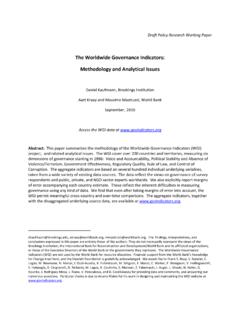Transcription of U.S. lithium battery regulations - Global Home: UPS
1 Effective February 6, 2015 2012-2015 United Parcel Service of America, Inc. UPS, the UPS brandmark and the color brown are trademarks of United Parcel Service of America, Inc. All rights reserved. 8/151 regulations applicable to shipments of lithium batteries within the United States have changed. Compliance with the new regulations is mandatory effective February 6, shippers are required to understand and comply with the applicable regulations . This guide provides general information about shipping to, from or within the and is for illustrative purposes only. Please reference regulations published by the Department of Transportation s Pipeline and Hazardous Materials Safety Administration (PHMSA), which may be found online at: : For information about shipping lithium batteries globally, please refer to regulations published by the International Air Transport Association (IATA), which may be found at: lithium batteriesBecause lithium batteries are designed to provide high levels of power, the electrical energy in these batteries is significant, meaning that such batteries can sometimes generate a great amount of heat if short circuited.
2 In addition, the chemical contents of these batteries may catch fire if damaged or if improp-erly designed or assembled. For these reasons, there are safety regulations controlling the shipment of these types of batteries. Shippers must conform to the applicable regulations published by PHMSA and/or all lithium batteries are classified as hazardous materials (also referred to as dangerous goods), there are exceptions for common small sizes of these batter-ies that simplify the rules for shipping these items. This document describes the rules for shipping these small lithium batteries. Shipments not fully regulated as Dangerous Goods do not require a UPS Dangerous Goods contract, provided restrictions below are lithium batteries by air serviceRegulations differ depending upon what type of lithium battery you are shipping ( lithium ion or lithium metal) and whether you are shipping batteries packed without equipment, batteries packed with equipment, or batteries contained in equipment.
3 Please see Figure 3 (Page 5) and Figure 5 (Page 7) for additional of changes to the IATA Dangerous Goods regulations and ICAO Technical Instructions, shipments of lithium metal batteries without equip-ment are limited to the UPS International Dangerous Goods (IDG) network. Please see the origins and destinations that are authorized for IDG: /content/us/en/resources/ship/idg / July 1, 2015, only pre-approved customers are allowed to ship lithium metal batteries without equipment (UN3090) via UPS Air services . Learn more about pre-approval: passenger and cargo airlines that UPS uses to serve some markets around the world now prohibit shipments of lithium ion batteries packaged without equipment (UN3480, shipped in accor-dance with Section II of IATA Packing Instruction 965) on their aircraft.
4 As a result, some countries are no longer available as origins or destinations for these shipments, or in some cases, addi-tional time in transit may be required. Visit for more : In recent years, there have been occasional recalls of defective lithium batteries. Never send recalled lithium batteries by air; doing so can be very dangerous and may result in fines or penalties against you, the sender. In addition, UPS does not transport recycled batteries by air. UPS services that have the potential to travel by air include: UPS Next Day Air , UPS 2nd Day Air , UPS Express Critical , UPS Worldwide Express Plus , UPS Worldwide Express , UPS Worldwide Express Freight , UPS Worldwide Saver and UPS Worldwide Expedited . lithium battery regulationsLithium battery typesThere are two major kinds of lithium batteries, both of which contain very high levels of energy: lithium ion (Li-ion) batteries are rechargeable.
5 Sometimes called secondary lithium batteries Includes lithium polymer (Li-Po) batteries These batteries are often found in common electronic devices such as cell phones and laptopsLithium metal batteries are generally non-rechargeable. Sometimes called primary lithium batteries lithium battery regulationsEffective February 6, 2015 2012-2015 United Parcel Service of America, Inc. UPS, the UPS brandmark and the color brown are trademarks of United Parcel Service of America, Inc. All rights reserved. 8/152 Shipping lithium batteries by ground serviceAdditional weight and labeling requirements now apply to ground shipments of lithium batteries in the The requirements differ depending upon what type of lithium battery you are shipping ( lithium ion or lithium metal) and whether you are shipping batteries packed without equipment, batteries packed with equipment, or batteries contained in equipment.
6 Please see Figure 4 (Page 6) and Figure 6 (Page 8) for additional requirements also apply to cross-border ground shipments from the to Canada and Ground service to or from Alaska, Hawaii, Puerto Rico and many small islands also must travel by aircraft for at least one flight segment. Shipments to or from these destinations are thus treated as air regulations and FAQsWhat do the abbreviations IATA and PHMSA mean?IATA is the International Air Transport Association. It is a Global trade organization that develops commercial standards and publishes the Dangerous Goods regulations , con-taining standards for the transport of dangerous goods by air. IATA s Dangerous Goods regulations are based on the International Civil Aviation Organization (ICAO) Technical Instructions for the Safe Transport of Dangerous Goods by Air.
7 ICAO is the United Nations body with jurisdiction over international aviation is the Pipeline and Hazardous Materials Safety Administration of the Department of Transportation, which develops regulations for transport of dangerous goods by all modes within the are some ways I can help prevent a short-circuit or activation of lithium batteries in my shipment while in transport?A major risk of shipping lithium batteries is short-circuit of a battery or inadver-tent acti vation while in transport. All batteries should be packed to eliminate the possibility of a short-circuit or activation (see Figure 1 for an example). Ensure no batteries can come in contact with other batteries, conductive surfaces or metal objects while in transport. IATA regulations require packing cells and batteries in fully enclosed inner packaging made of non-conductive material ( , plastic bags) and ensuring that exposed terminals or connectors are protected with non-conductive caps or tape or by other similar means.
8 They also recommend securely cushioning and require packing batteries to prevent shifting during trans-port or loosening of terminal caps. Do not use envelopes or other soft-sided packs. Please see the IATA website for additional tips and guidance: 1 Sample Packaging lithium Batteries Blister Pack Cushioning DividerBlister lithium battery regulationsEffective February 6, 2015 2012-2015 United Parcel Service of America, Inc. UPS, the UPS brandmark and the color brown are trademarks of United Parcel Service of America, Inc. All rights reserved. 8/153 General regulations and FAQs (cont.)Do quantity limits on cells and batteries apply to the overpacks? For the purposes of the regulation, what is considered the package ?An overpack may be used to consolidate several packages that have been properly prepared for shipment.
9 Provided the individual packages are in compliance with the regulations , then at this time the limits apply only to the package(s) within the over-pack. However, it is required that the individual packages comply with the necessary requirements (such as the ability to withstand a meter drop test). The overpack must be marked with the word overpack and labeled with the appropriate lithium battery handling label. See Figure 2 does the abbreviation Wh mean? Wh stands for watt-hour. It is a measure used to indicate the energy capacity of a lithium ion cell or is a button battery ?A button battery is a small round battery where the height is less than the diameter1 also commonly referred to as coin batteries. Examples can be found in watches, calculators, electronic clocks, toys and other is a cell versus a battery under this regulation?
10 A battery is two or more cells electrically connected together by permanent means, including case, terminals and : battery packs, modules or battery assemblies are treated as batteries under this regulation. A cell is a single encased electrochemical unit. It has one positive and one negative electrode that exhibit a voltage differential across its two : Many cells can be termed battery or single-cell battery in common conversation, but under this regulation a single cell must use the requirements related to cells only. Examples of a cell would be a CR123 primary lithium cell used for cameras and Source: IATA lithium battery Guidance Document: Transport of lithium Metal and lithium Ion Batteries. IATA. 2014. Web. 2 lithium battery label and OVERPACK statementIndividual packages (with labeling) within lithium battery regulationsEffective February 6, 2015 2012-2015 United Parcel Service of America, Inc.













